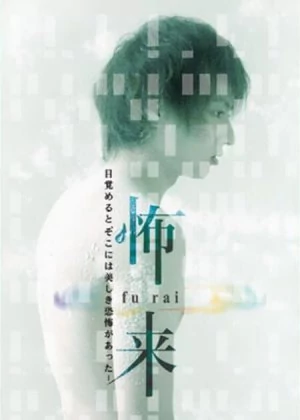Fu-rai

Some films are low on budget yet high on concept. They don't need fancy special effects, wealthy actors or an elaborate crew to translate their vision onto the silver screen. All they need is a few good ideas and a creative team to work around all the limitations they will be facing. White Panic is a good example of such a film and even though it doesn't compete with the best, it's a damn fun ride nonetheless.

Science-fiction is a welcome genre for directors wanting to show off their skills with a very limited amount of money. Working in small spaces with shots from specific angles, the right lighting and just the right amount of tech and steam is often more effective than filling the screen with full-blown CG galaxies and spaceships. It's exactly the reason why sci-fi can sometimes feel more claustrophobic than spatial, but the result is usually more than satisfying.
White Panic's premise isn't too original, basically joining the list of films borrowing their setup from Cube and drawing some extra parallels with the Saw series. Four people waking up in a room with no recollection of how they got there, who the others are or why they were put there in the first place, that's all there is to it. It's a little cheap but effective enough. From there on, the film takes a predictable path laying much of its trust in the ending of the film.
After a somewhat disturbing intro we are introduced to the characters. Waking up in a strange room is one thing, but being covered in a weird white powder really puts them on edge. It only becomes worse when people charge in to feed them an unidentifiable liquid. The four don't seem to get along all that well and when the opportunity of escape presents itself they don't exactly proceed as a team.

Visually there's some good stuff here. The DV look can be quite harsh at times producing sharp contrast edges and heavy whites, but overall the look of the film is nice enough. Some clever play with black-light lighting helps to make it a bit more attractive, the editing is nifty and essential in hiding some of the rougher parts. The low-budget look is ever present but used to good effect.
The soundtrack gives the film a slight cyberpunk edge. Rough industrial sounds and soundscapes make up most of the soundtrack, lending the film a pleasantly dark atmosphere where needed. It's not as defining as it could have been but it works alright and shows more individuality than found in most other films. Acting is rather flat as most of the film is carried by its style. The actors aren't truly horrible but I'm quite sure they're not going to win any prizes anytime soon. It's all kept very functional and pretty dry.

The first half of the film is rather predictable. You've seen these films before so you know that after the initial introduction the middle part will see our main cast trying to escape from their prison. The ending always plays an important role in these films as it gives a sense of meaning and purpose to the whole setup, making it more than just a simple mind fuck. And it must be said, this is where White Panic truly shines.
Not that the ending is in some way deep or inexplicably brilliant, but it's sure to surprise most of you. It's not an impossible twist to predict but rather an option you would have discarded the second you thought it up. It's a Japanese film though and nothing is too silly for the Japanese. It's one of those few select endings that really make a film better, even if it doesn't make a whole lot of sense.
All in all White Panic is a great calling card for director Shugo Fujii (who you might already know from Living Hell). He confirms once again that he can make something good out of a tried and tested premise with a tight budget and delivers a film that packs enough punch and is blessed with a great ending. If you can look past some of the typical low-budget quirks, you're in for a fun ride with a pleasantly weird ending.